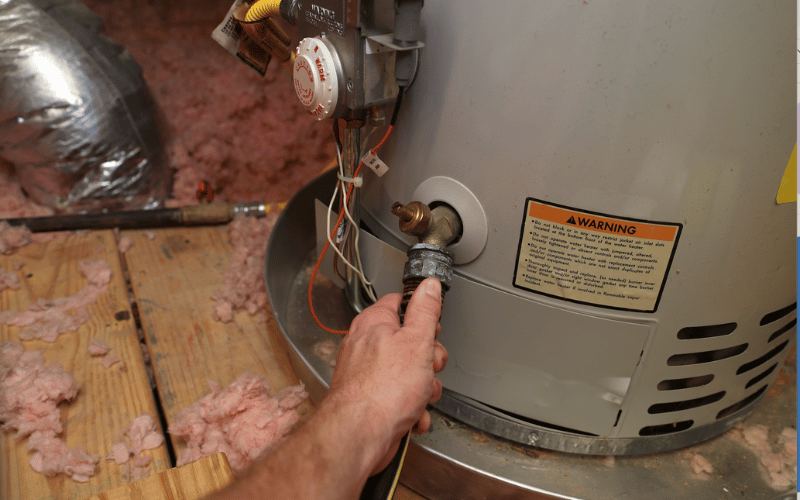Best Practices for Maintaining Your Home's Hot Water System
Best Practices for Maintaining Your Home's Hot Water System
Blog Article
The content following next about Tips on Maintaining a Water Heater is fairly motivating. Don't skip it.

Hot water is essential for day-to-day convenience, whether it's for a rejuvenating shower or washing recipes. To guarantee your hot water system runs efficiently and lasts longer, normal maintenance is essential. This article gives useful pointers and insights on just how to maintain your home's warm water system to stay clear of interruptions and expensive repair work.
Introduction
Keeping your home's warm water system may seem complicated, but with a couple of straightforward actions, you can ensure it operates smoothly for several years to find. This overview covers everything from recognizing your hot water system to DIY upkeep ideas and recognizing when to hire professional help.
Significance of Maintaining Your Hot Water System
Regular upkeep not just prolongs the lifespan of your hot water system yet likewise ensures it runs successfully. Ignoring maintenance can lead to lowered effectiveness, higher power bills, and also premature failing of the system.
Indicators Your Warm Water System Needs Maintenance
Understanding when your hot water system needs focus can stop major concerns. Look out for indicators such as irregular water temperature level, strange noises from the heating unit, or corroded water.
Recognizing Your Warm Water System
Before diving into maintenance tasks, it's useful to understand the basic elements of your hot water system. Commonly, this consists of the hot water heater itself, pipelines, anode rods, and temperature controls.
Month-to-month Upkeep Tasks
Regular monthly checks can help catch small concerns prior to they rise.
Purging the Water Heater
Purging your water heater removes sediment build-up, enhancing effectiveness and lengthening its life.
Monitoring and Replacing Anode Rods
Anode rods prevent deterioration inside the container. Checking and replacing them when broken is crucial.
Checking and Changing Temperature Level Settings
Adjusting the temperature setups makes sure optimal performance and safety and security.
DIY Tips for Upkeep
You can carry out numerous maintenance tasks on your own to keep your warm water system in leading condition.
Checking for Leakages
Routinely check pipelines and connections for leaks, as these can result in water damages and greater costs.
Examining Pressure Relief Valves
Evaluating the pressure relief valve ensures it operates correctly and avoids excessive pressure accumulation.
Insulating Pipes
Shielding warm water pipelines reduces heat loss and can conserve energy.
When to Call an Expert
While DIY upkeep is helpful, some issues call for specialist proficiency.
Complex Concerns Calling For Expert Assistance
Instances consist of major leakages, electrical troubles, or if your water heater is consistently underperforming.
Regular Professional Upkeep Benefits
Expert upkeep can include thorough assessments, tune-ups, and ensuring conformity with safety and security standards.
Final thought
Regular maintenance of your home's hot water system is crucial for efficiency, longevity, and expense financial savings. By complying with these tips and knowing when to look for specialist aid, you can make certain a dependable supply of warm water without unanticipated interruptions.
How to Maintain an Instant Hot Water Heater
Before tinkering with your hot water heater, make sure that it’s not powered on. You also have to turn off the main circuit breaker and shut off the main gas line to prevent accidents. Also turn off the water valves connected to your unit to prevent water from flowing into and out of the appliance. 2. When you’re done, you have to detach the purge valves’ caps. These look like the letter “T†and are situated on either side of the water valves. Doing so will release any pressure that has accumulated inside the valves while at the same time avoid hot water from shooting out and burning your skin. 3. When the purge valves’ caps are removed, you have to connect your hosing lines to the valves. Your unit should have come with three hoses but if it didn’t, you can purchase these things from any hardware or home repair shops. You can also get them from retail stores that sell water heating systems. Read the user’s manual and follow it to complete this task properly. When the hosing lines are connected, open the purge port’s valves. 4. You should never use harsh chemical cleaners or solutions when cleaning your unit. Make use of white vinegar instead. It should be undiluted and you’ll probably use about 2 gallons. 5. Now flush your water heater. This task should probably take about 40 minutes. We can’t give you specific directions for this because the procedure is carried out depending on the type, model and brand of your heater. With that being said, refer to the user’s manual. 6. When you’re done draining the unit, you have to turn off the purge port valves again. Remove the hosing lines that you earlier installed on each of the water valves. Put the valve caps (purge port) back in their respective places and be very careful so as not to damage the rubber discs that are found inside these caps. 7. Now that everything’s back in place, check your user’s manual again to find out how to reactivate your water heating system. 8. Once it is working, turn one of your hot water faucets on just to let air pass through the heater’s water supply pipes. Leave the tap on until water flows smoothly out of it. https://www.orrplumbing.com/blog/2014/september/how-to-maintain-an-instant-hot-water-heater/

As a devoted reader about What Kind of Maintenance Do Water Heaters Need?, I was thinking sharing that portion was sensible. Are you aware of another person who is interested in How to Maintain Your Water Heater & Prolong its Life? Feel free to promote it. Thanks for taking the time to read it.
Schedule Appointment Now Report this page